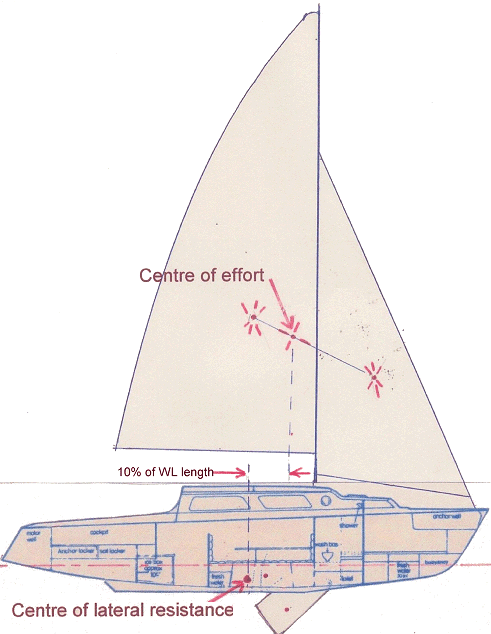from Rob Legg Yachts | |||||
|
|
|
|
|
||
Episode 2: Designing the RL28
At this point I drew up a trial sail plan to check the balance between the centre of effort from the sails and the centre of lateral resistance with the plate and rudder down. At first the rig plan was too far aft, as normally the centre of effort should be about 10% of the water line length ahead of the centre of the CLR. I didn't want to move the centre case aft as it was ideally placed where it was supported by the bulk head, and the lifting ram could only be attached to the Sampson post, so these positions were fixed. The only solution was to set the mast upright rather than have the usual rake aft and to reduce the foot length of the main sail. A slightly smaller rudder also helped as 25% of the rudder size is also taken in to account in calculating the CLR position. Why use a three quarter rig? Because a mast head rig necessitates a big head sail, and big head sails are a devil of a thing to handle in windy conditions. Also to a degree, the mainsail shape can be controlled with a back stay, the more tension the more the sail is flattened. This reduces the power in the sail and so lessens the weather helm and heeling effect. Why does the centre of effort have to lead the centre of lateral resistance by some 10% ? If the lead distance was increased, the boat would have a lee helm and that can be very dangerous. If the lead distance was decreased, the helm would be so heavy as to make the boat unmanageable. |


